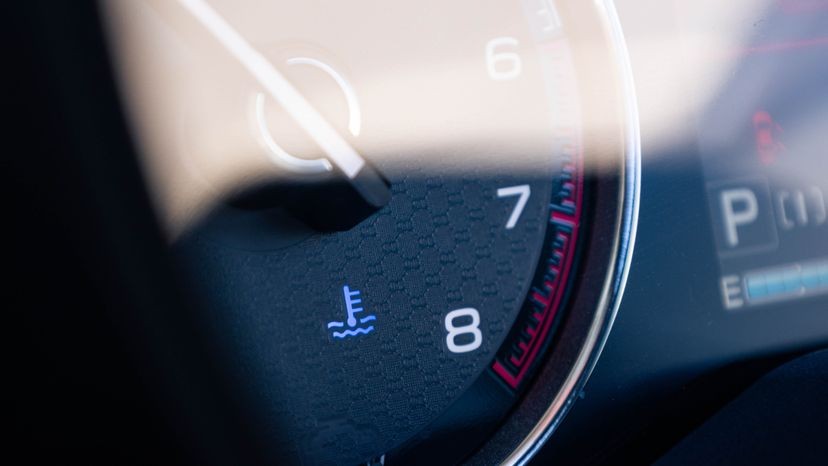Maintaining the optimal operating temperature is crucial for the health and efficiency of your car’s engine. Among the unsung heroes working tirelessly under the hood is a small but mighty component: the thermostat. If you’ve ever wondered, “How Does A Thermostat In A Car Work?”, you’re in the right place. This guide will delve into the workings of this essential part, explaining its function, importance, and what to do if it malfunctions.
What is a Car Thermostat and Where is it Located?
The car thermostat is a vital part of your vehicle’s cooling system. It’s essentially a temperature-sensitive valve strategically positioned between the engine and the radiator. Typically, you’ll find it housed within the thermostat housing, often located where the upper radiator hose connects to the engine. This placement allows it to effectively monitor the coolant temperature as it exits the engine. Despite its critical role, a thermostat is surprisingly compact, usually around 2 inches (5 cm) in diameter.
 Close up of a car engine bay components
Close up of a car engine bay components
How Does a Car Thermostat Work?
The magic behind a thermostat’s operation lies in its simple yet ingenious design. At its heart, a car thermostat uses a wax pellet to control coolant flow based on temperature changes. Here’s a breakdown of the process:
The Wax Pellet: The Core Component
Inside the thermostat, you’ll find a small cylinder filled with a special wax. This wax is engineered to begin melting at a specific temperature, typically around 180-195 degrees Fahrenheit (82-90 degrees Celsius), although this can vary slightly depending on the vehicle and thermostat design.
A rod, connected to the thermostat valve, is inserted into this wax pellet. This wax is the key to the thermostat’s temperature-sensitive operation.
Temperature-Sensitive Operation: Opening and Closing the Valve
When the engine is cold, such as when you first start your car, the wax inside the thermostat is in a solid state. In this state, the wax is contracted, and the thermostat valve remains closed. This closed valve prevents coolant from circulating to the radiator. This seemingly counterintuitive action is crucial because it allows the engine to heat up quickly to its optimal operating temperature. A faster warm-up reduces engine wear and tear and allows the engine to reach peak efficiency sooner.
As the engine runs and its temperature rises, the coolant circulating within the engine block also heats up. When the coolant reaches the thermostat’s designed opening temperature, the wax pellet begins to melt. Melting wax expands significantly in volume. This expansion forces the rod out of the cylinder, which in turn pushes open the thermostat valve.
Once the thermostat valve opens, it allows coolant to flow through to the radiator. The radiator then dissipates heat from the coolant, cooling it down before it recirculates back into the engine. This continuous cycle of coolant flow, regulated by the thermostat, maintains the engine at a stable and optimal temperature, preventing overheating.
If the engine temperature starts to drop, for example, when driving in cold weather or at high speeds, the wax begins to cool and solidify, contracting in volume. This contraction allows the thermostat valve to partially or fully close, restricting coolant flow to the radiator and helping the engine maintain its ideal operating temperature.
Why is a Thermostat Crucial for Your Car?
A properly functioning thermostat is not just beneficial; it’s essential for several critical aspects of your car’s performance and longevity.
Maintaining Optimal Engine Temperature
The primary role of the thermostat is to maintain the engine at its optimal operating temperature. Modern engines are designed to run most efficiently within a specific temperature range. Too cold, and engine efficiency and combustion suffer. Too hot, and critical engine components can be damaged. The thermostat ensures this delicate balance is maintained.
Enhancing Engine Performance and Fuel Efficiency
When an engine operates at its ideal temperature, it achieves optimal combustion. This leads to better engine performance, smoother operation, and improved fuel efficiency. A thermostat ensures the engine reaches and stays within this efficient temperature range, saving you money at the pump and maximizing your car’s responsiveness.
Reducing Emissions
Engines running at their optimal temperature produce cleaner emissions. Efficient combustion means more complete burning of fuel, reducing the release of harmful pollutants into the atmosphere. A functioning thermostat contributes to a cleaner environment by helping your car’s emission control systems work effectively.
Preventing Overheating and Engine Damage
Overheating is a major threat to engine health and can lead to severe damage, including warped cylinder heads, cracked engine blocks, and blown head gaskets – repairs that are costly and time-consuming. The thermostat is a critical safeguard against overheating. By regulating coolant flow to the radiator, it prevents the engine from reaching dangerously high temperatures, protecting vital engine components from heat-related damage.
Extending Engine Lifespan
By preventing extreme temperature fluctuations and ensuring the engine operates within its designed parameters, the thermostat plays a significant role in extending the overall lifespan of your engine. Consistent optimal operating temperatures reduce stress on engine components, minimizing wear and tear over time.
Recognizing a Faulty Thermostat: Symptoms to Watch For
A malfunctioning thermostat can cause a range of problems. Recognizing the symptoms early can prevent more serious engine issues. Here are key signs of a faulty thermostat:
Engine Overheating
This is one of the most common and serious symptoms. If the thermostat is stuck closed, it will prevent coolant from reaching the radiator. As a result, the engine temperature will rise rapidly, often indicated by a temperature gauge moving into the red zone or a warning light illuminating on your dashboard. Engine overheating can quickly lead to severe engine damage.
Engine Underheating
Conversely, if the thermostat is stuck open, coolant will continuously circulate to the radiator, even when the engine is cold. This can prevent the engine from reaching its optimal operating temperature, especially in cold weather. An engine running too cold is inefficient, leading to reduced fuel economy and increased engine wear over the long term.
Erratic Temperature Gauge Readings
Fluctuating temperature gauge readings, where the gauge needle moves erratically between hot and cold, can indicate a thermostat that is sticking or opening and closing inconsistently. This erratic behavior can disrupt engine performance and should be investigated.
Increased Fuel Consumption
If the engine runs too cold due to a stuck-open thermostat, the engine control unit (ECU) may compensate by enriching the fuel mixture to try and warm up the engine. This results in increased fuel consumption and decreased fuel economy.
Coolant Leaks Around the Thermostat Housing
Sometimes, a failing thermostat can cause leaks around the thermostat housing. This could be due to a warped housing from overheating or damage to the thermostat gasket. Visible coolant leaks are always a cause for concern and should be addressed promptly.
A mechanic demonstrates the process of replacing a car thermostat, highlighting the accessibility of the thermostat housing for maintenance and repair.
Thermostat Replacement and Maintenance
If you suspect a faulty thermostat, it’s crucial to have it inspected and replaced by a qualified mechanic as soon as possible. Thermostat replacement is a relatively straightforward and inexpensive repair compared to the potential engine damage a faulty thermostat can cause.
Regular maintenance of your car’s cooling system, including coolant flushes and inspections, can help ensure the thermostat and other cooling system components are functioning correctly.
In conclusion, the thermostat, though small and often overlooked, is a critical component in your car’s engine management system. Understanding how a thermostat in a car works and recognizing the symptoms of a failing one can save you from costly repairs and ensure your vehicle runs smoothly and efficiently for years to come. Don’t underestimate this little valve – it plays a big role in your car’s overall health and performance.
